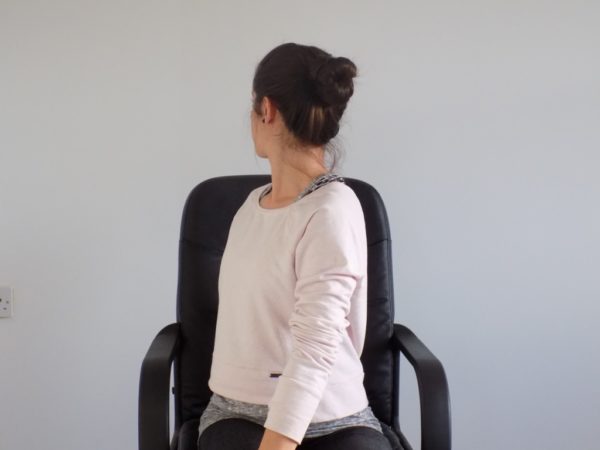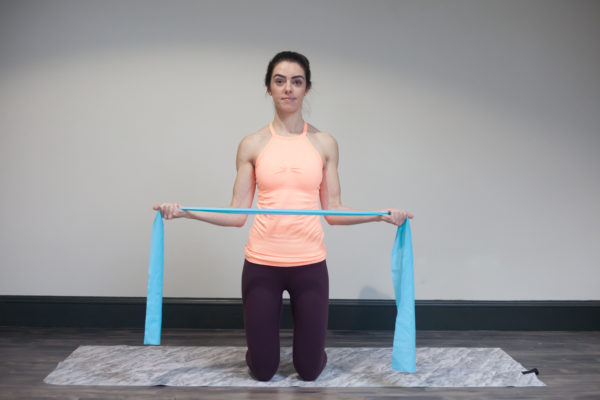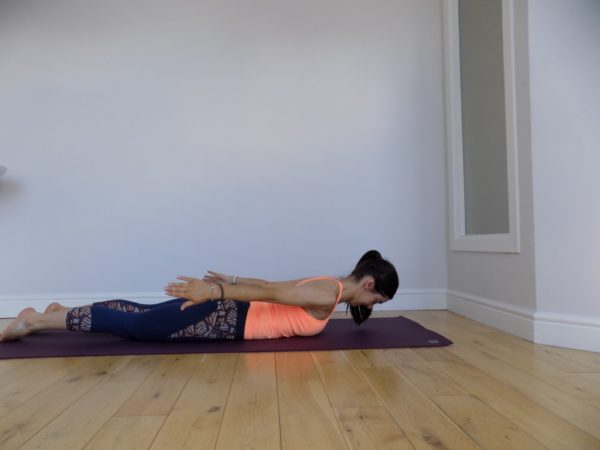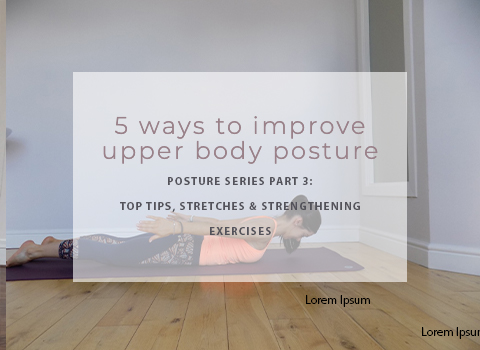Welcome to part 3 of the Posture series. So far we have covered Muscle Activation exercises at your desk, and Tight Hip Flexors, and today we are discussing Upper Body Strength. This are is often over looked when it comes to posture and desk issues, I feel most people are aware of looking after their lower back or experience low back pain (see The Full Guide to Low Back Pain here), but there is also so much we can do for the upper back.
The majority of our daily activities involve forward flexion. This in turn leads to tightening across the front of your chest, and a weakening of the upper back muscles, especially in between the shoulder blades. A forward poked head and rounded shoulders all contribute to this poor upper body posture that I’m sure we are all guilty of at some point! Even with best intentions, as you get engrossed in work and leaning towards your computer, this posture creeps in. Over time this can strain the upper back and neck muscles and eventually we end up with aches and pains. Improving our posture and restoring balance through the upper body will prevent this happening!
How to help upper back posture:
1. Make sure you are sitting correctly as much as possible
Your desk set up should optimise your posture. Sit yourself right back in your chair so that your bottom and low back touch the back support (with or without a lumbar roll support). Next, bring your chair close to the desk so that your stomach touches the edge of the desk. Place both feet flat on the floor and ideally hips and knees would each be at 90 degrees. Aim to keep your upper back against the back support to prevent forward leaning, and keep your neck lifted long, not poking forwards. Relax your shoulders down from your ears. Bring all your work close to you so that you do not have to over stretch or reach out for prolonged periods of time. If you are working on a screen, the mid screen should be at eye level to keep the neck neutral. I know working at home (or sometimes the office!) can bring less ideal situations so do what you can from this and make it the best you are able.
2. Stretch the chest and thoracic spine regularly
Any prolonged period in one position requires movement after to counteract the static position. To help the upper back this would consist of opening the chest and rotating the thoracic spine (upper spine). Try to repeat these every hour or so when sitting for long durations.

3. Strengthen the upper back muscles in a seated position
This is ideal as it works the muscles in the functional position you need them to be active in. Plus, you can add it in to your work day as you don’t even need to leave your desk! This will re-activate the scapular muscles, and re-set your posture for the next duration, hopefully delaying or minimising any discomfort. This can be done sitting at your desk, with or without the band. Have your elbows at 90 degrees, and gently open the forearms outwards, drawing the shoulder blades gently towards each other and downwards.

4. Strengthen the upper back muscles in more challenging positions
The next stage would be to progress to more challenging positions, albeit not practical during work! However this exercise would allow your upper back strength to improve further and therefore provide a more longer lasting benefit. Begin on your front with shoulders relaxed. Draw shoulder blades towards each other and downwards, reaching for your toes, whilst simultaneously raising your head and upper chest. Keep looking down so your neck is long. Repeat 8-10 times.

5. Strengthen the deep neck muscles
If you strengthen the upper back muscles, we also want to include the neck muscles so that we restore neck alignment and reduce the forward poked chin posture. To do this we perform neck retractions. Begin by sitting up tall with your back against the back of your chair. Draw your chin in towards your neck BUT make sure you keep your eye gaze straight out in front of you and imagine you’re drawing the chin along a shelf ie. don’t look down while you do it. Repeat x 10, 3 x per day, or as required.
I hope those help with your upper back posture, provide some relief, and further strength!
Tracy


